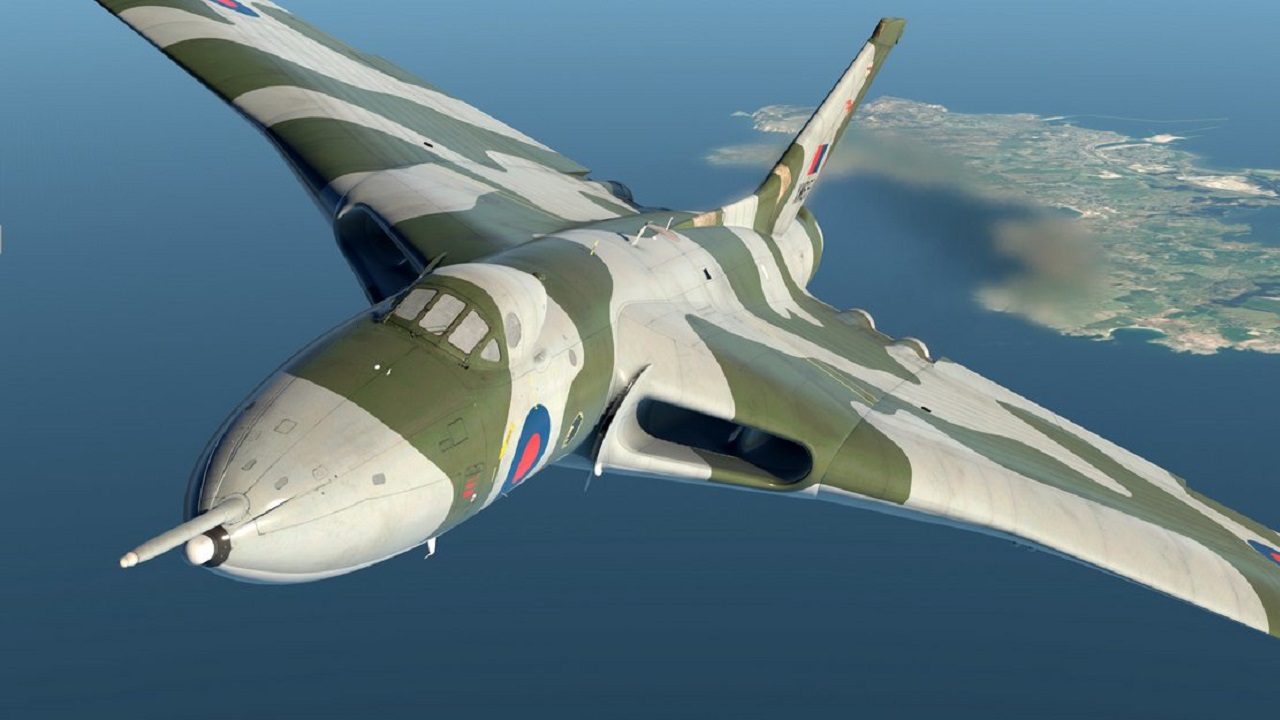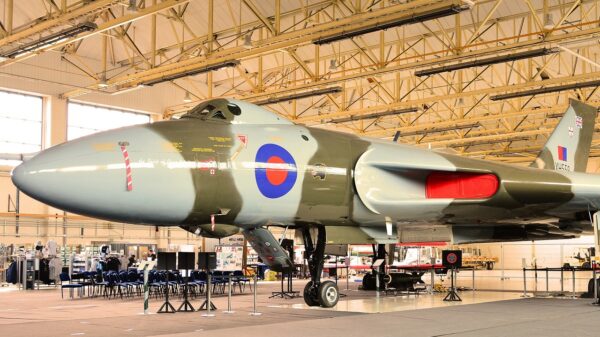Often referred to as the Spirit of Great Britain, the Royal Air Force’s Avro Vulcan is a jet-powered, tailless, high-altitude bomber that flew from the mid-1950s through the 1980s. It was a Cold War warrior designed for World War III on Russia.

A large, sleek-looking bomber, the Avro Vulcan flew in many variants over the course of the years, with the primary mission of carrying nuclear weapons.
The Vulcan was also capable of conventional attack, and it functioned in that capacity during the Falklands War in 1982.
Throughout its service life, the aircraft has used its .98-Mach speed and high-altitude flying ability to avoid being targeted. As such, it was not armed with any defensive weaponry. The aircraft was integrated with electronic warfare countermeasures.
Advanced radar allowed the RAF to convert nine Vulcans into maritime radar reconnaissance operations. Several Vulcans were also converted into aerial refuelers, expanding attack reach for the UK’s nuclear deterrence posture.
The Vulcan could fly with a payload of 21,000 pounds and a range of nuclear weapons such as the Blue Steel Mk 1 standoff missile able to hold targets at risk from distances beyond the scope of most ground-based air defenses.
While the Vulcan’s 1950s airframe certainly would not be described as stealthy, it did have a somewhat smooth and rounded fuselage in a way that slightly resembles the U.S. Air Force’s B1-B.
The Vulcan took its last flight in 2015 and is now on display in a museum, yet the aircraft maintains a certain cultural allure and a timeless mystique, as evidenced by its continued presence in the collective cultural psyche of the UK and RAF.

An interesting essay in Smithsonian Air & Space magazine in 2004 celebrates some of the Vulcan’s attributes, such as its four 17,000-pound-thrust engines and its blended wing-body or “all wing” configuration.
“Its structure is virtually all wing save for the 30-foot potbelly bay designed to hold a single Blue Danube nuclear gravity bomb roughly the size of a London bus,” Air and Space Magazine wrote.
Part of the aircraft’s historical allure relates to its combat debut in the Falklands in May of 1982.
The Avro Vulcan delivered the opening attacks on Port Stanley, making the runway unusable for Argentinian forces. Throughout several missions during the war, RAF Vulcans successfully attacked Argentine radar and conducted several conventional bombing operations.
An essay on the Vulcan’s operations in the Falklands at militaryfactory.com explains that the aircraft’s suite of electronic countermeasures proved successful against Argentine ground radar systems.





